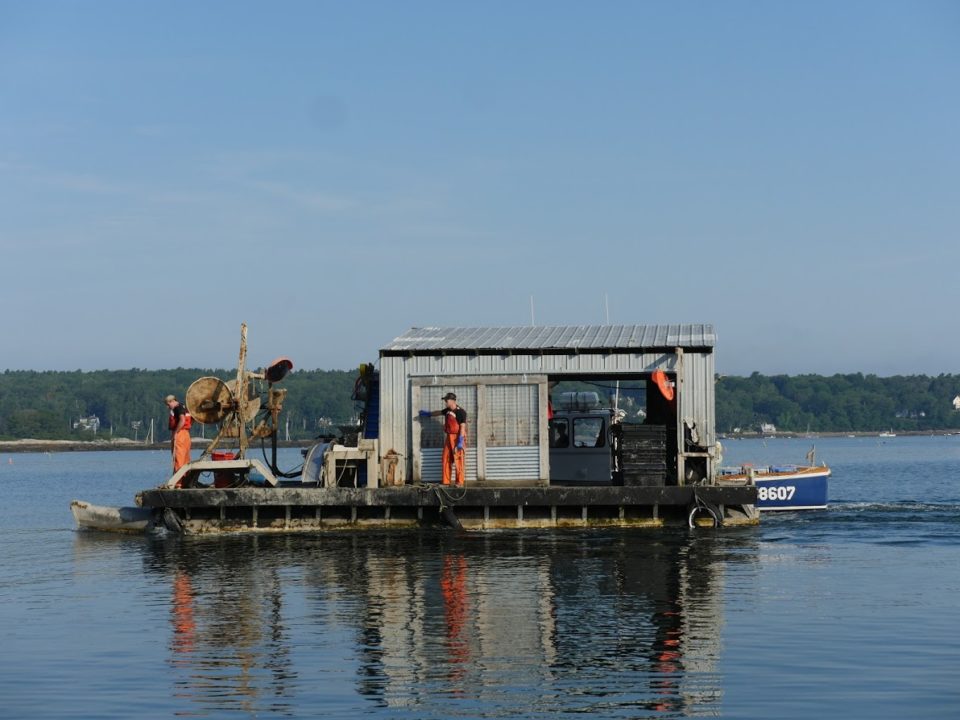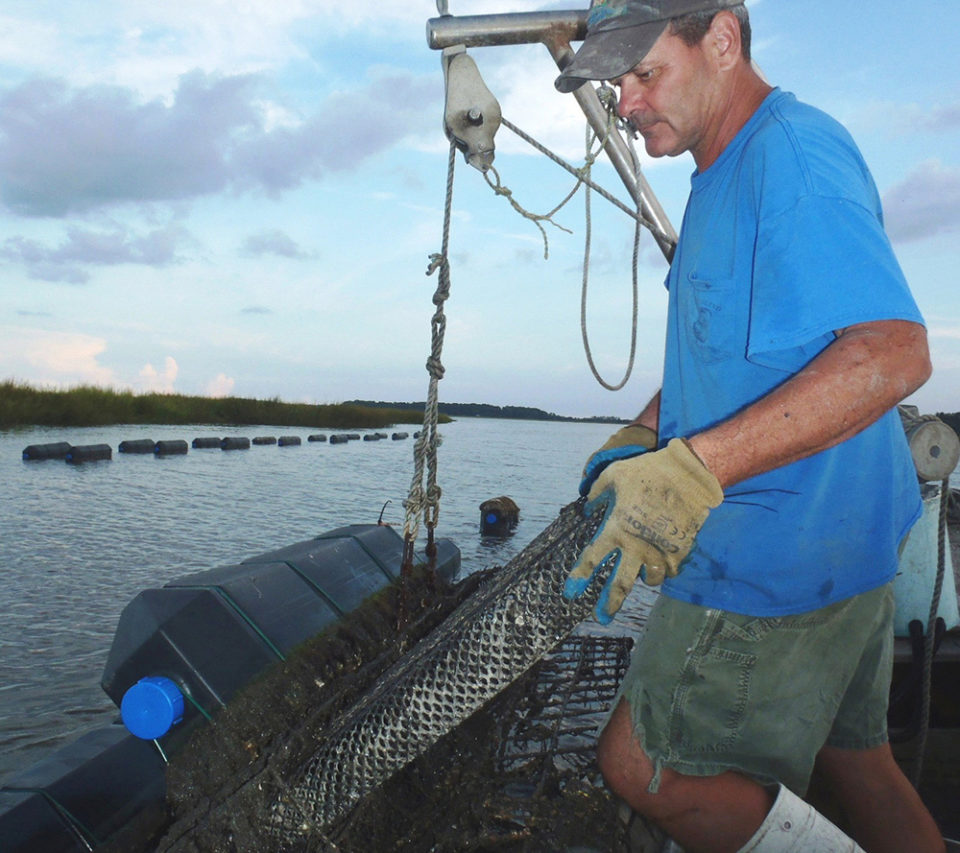Seafood for the Future: Communication, education crucial for acceptance and growth of U.S. industry

Perhaps the biggest barrier to aquaculture’s growth and development in the United States is public perception. There’s a lack of trust. And at the root of that, according to Kimberly Thompson, is education.
“The majority of the American public is not aware of what aquaculture is,” said Thompson, program manager at Seafood for the Future, a program at the Aquarium of the Pacific in Long Beach, Calif. Those who have formed opinions about fish farming tend to view the industry negatively, she added, making the challenge more difficult to overcome.
Seafood for the Future recently conducted a survey on aquaculture outreach, to explore this and how, if possible to change it. Who is talking to the public about marine dynamic aquaculture, and in what ways? What are they saying, and in what context?
It ultimately determined that there is significant potential to amplify scientifically accurate messaging about aquaculture and its role in a sustainable food supply. It will take a team effort.
There were three main calls to action: to engage more people about aquaculture in a positive way; to connect various stakeholder groups with appropriate experts so that they, in turn, can engage their audience with accurate data; and to provide a suite of communication tools to better relay that accurate messaging.
If these efforts are successful, the hope is that responsible marine aquaculture in the United States will grow and expand. Thompson admits that contending with misleading or inaccurate information is no simple task.

“You have this group of well-intentioned people who are in favor of sourcing sustainable seafood, but their perceptions haven’t kept pace with scientific advances,” Thompson said. “These are the groups of people who reach out to local legislators and who are the most vocal during comment periods on proposed legislation. They also tend to have greater influence in the media.”
A lack of collaboration and an inconsistency in the dissemination of scientific information is at the core of the issue. Consumers are receiving different messages from their aquariums, their seafood retailers, their favorite chefs and from their news outlets. Some people think aquaculture threatens wild fisheries, a debate that often puts seafood businesses that source both wild and farmed fish in the middle.
“Americans are proud of their wild fisheries and tend to see aquaculture as encroaching on wild fisheries’ cultural significance and economics,” said Halley Froehlich, founder of the Conservation Aquaculture Research Team. “Early growing pains with aquaculture such as disease outbreaks and environmental offences have contributed to this dynamic of negative opinion towards the growth and expansion of domestic aquaculture.”
Froehlich cited the discussion about aquaculture expansion in the port of Santa Barbara, Calif., as an example.
“We have an offshore mussel farm and an abalone farm and there’s been discussions about expanding the aquaculture space and increasing production for at least a decade,” she explained. “But there’s been a lot of pushback from environmental groups and the fishing community, so the discussion is highly contentious and there’s no resolution in sight.”

Thompson believes change is possible, but in order for it to happen, collaboration among stakeholder groups is essential.
“We need to ensure that consistent, accurate information, packaged in a culturally acceptable and approachable way, is delivered to American consumers,” she said. “That means working with wild capture seafood as well to eliminate the myths that make seafood scary and inform consumers how to prepare seafood.”
It’s not going to happen overnight but Seafood for the Future has a clear timeline on achieving its goal. February and March are dedicated to receiving stakeholder input and doing a landscape analysis to determine who is doing what in terms of aquaculture research and information dissemination.
“While there are groups working on this information already, it tends to be segregated and siloed,” she said. “We’re trying to map out who is doing what, learn how we can amplify their efforts, figure out where the information gaps are and build out from that.”
The landscape analysis segment will help determine what a successful launch of the communications strategy will cost, Thompson said: “In many cases there are already groups invested in these efforts, so the hope is we can all pitch in with in-kind support to amplify efforts that already have funding and resources. Ideally, we’ll start with projects we can support with minimal funding to show proof of concept.”
The most desirable communications tools are images, video footage and workshop reports on marine aquaculture, which tend to be available at no cost. What’s needed is the mechanism to distribute that accurate messaging across diverse networks without compromising its scientific integrity of the content and ensuring proper credits and protections for those providing the content.
Early growing pains with aquaculture such as disease outbreaks and environmental offences have contributed to this dynamic of negative opinion towards the growth and expansion of domestic aquaculture.
In April Thompson and her team will test the communication toolkit repository and finalize their strategy, and by May a formal advisory committee will be selected to manage the project so that implementation can begin in June. Present collaborators on this project include the California Department of Fish and Wildlife, Hubbs-SeaWorld Research Institute, Love the Wild, NOAA Fisheries, Pacific6, Pacific Ocean AquaFarms LLC, Polished Brands, Santa Monica Seafood, the Global Aquaculture Alliance and Sea Grant.
This diverse group of collaborators bodes well for the future.
“We need all hands on deck to help provide and distribute accurate information across diverse networks,” Thompson said. “Scientists and NGOs can help provide fact sheets and the latest information from aquaculture research. Seafood suppliers are the connective tissue between the farms and fisheries, the chefs and retailers, and ultimately the consumers. Farms are the front lines and their stories and experiences will play an important role, but the success of this effort will require input and participation from all of these stakeholders.”
This survey and the ensuing tasks over the next few months are coming at a good time, said Cynthia Sandoval, communications specialist at the NOAA Fisheries Office of Aquaculture.
“Many stakeholders want to understand the challenges and benefits of aquaculture, especially as communities look for ways to maintain working waterfronts and diversify their seafood portfolio. Providing outreach materials with accurate information is vital to cultivating public understanding of farmed seafood. This survey is one part of a greater effort by many in the aquaculture community to increase usability of aquaculture material and facilitate greater public awareness and acceptance of aquaculture.”
Follow the Advocate on Twitter @GAA_Advocate
Now that you've finished reading the article ...
… we hope you’ll consider supporting our mission to document the evolution of the global aquaculture industry and share our vast network of contributors’ expansive knowledge every week.
By becoming a Global Seafood Alliance member, you’re ensuring that all of the pre-competitive work we do through member benefits, resources and events can continue. Individual membership costs just $50 a year. GSA individual and corporate members receive complimentary access to a series of GOAL virtual events beginning in April. Join now.
Not a GSA member? Join us.
Author
-

Lauren Kramer
Lauren Kramer is a freelance journalist residing in Richmond, B.C., who has written extensively about seafood marketing for SeaFood Business magazine and SeafoodSource.com. Her work appears in a number of publications, including the National Culinary Review and Alaska Airlines Magazine.
Tagged With
Related Posts

Intelligence
‘Spatiotemporal patterns’ indicate improving perceptions of aquaculture
A study led by University of California Santa Barbara researchers has found that public sentiment toward aquaculture improves over time, a potentially important development with growing interest in offshore aquaculture.

Intelligence
Cup size matters, but for oysters, branding matters more
To name an oyster is to give birth to a brand, essential to stand out in today’s raw bar scene. The briny bite-sized morsels are arguably seafood’s sexiest offerings, but a memorable moniker (and a quality product) is what keeps them on the menu.

Innovation & Investment
At Aquaculture America 2018, signs of support for thriving domestic industry
Aquaculture must reshape its public narrative in order for the blue revolution to transpire. That’s what many prominent voices were saying at the World Aquaculture Society’s annual U.S. conference in Las Vegas.

Responsibility
Do you know offshore aquaculture when you see it?
Researchers have determined that a definition of “offshore aquaculture” was necessary to critically assess the impacts and benefits of moving fish farming operations “slightly farther and slightly deeper” out to sea.

